Expert Interviews
- University Reviews
- Career Guide
 Video Counseling
Video CounselingImportant Facts
- Ask any Question - CV Forum

Python Project Ideas (Beginners, Intermediate & Advanced Level 2025)
College Vidya Team Jan 15, 2025 27.3K Reads

Python is a computer programming language that is among the ones highly demanded in the professional domain today. needs to be learned practically. One of the key aspects of acing the Python language and its programming is to keep updating and putting your skills to practise through various projects. Python skills can be honed through regular practice, and hence, one’s training in the programming language is not complete until they put in efforts to regularly code projects and learn skills hands-on.
We asked a group of software engineers, “What advice would you like to give your younger self when you were learning Python?” One remark that was common in all the answers was- create as many Python projects as possible!
Professionals emphasise the fact that you learn more while actually practising the language than by just reading and watching videos for tutorials of Python programming. Constant learning is very important in this field if you wish to increase your success rate. And to do this, the best way is to build more and more Python projects.
Your First Python Project
If you are experienced in programming and coding at basic levels, then you can start building your first Python project right away. All you need is a good idea to start with. The first and foremost purpose this serves is to enable you to practise your Python skills on hands-on simple projects and identify your strengths and errors.
However, if you are a fresher who is just starting out without any experience in programming, then it is important to first understand the basics. Even though practising by making projects is of paramount importance in coding and programming, having the basics learnt and honed can get you a long way in Python programming. So, the learning should be a blend of both knowledge and practice. Beginners can build their basics using various online courses.
There are numerous short-term online courses for Python Basics that will help you build a foundation in Python programming. Various courses in the online mode like Data Sciences, AI and development etc. can enable learners to grow skills in Python coding.
|
Top Executive Education Programs for Python Learners |
|
Once you have completed such a course, you will be absolutely ready to build your very first Python project. Some of the courses even help you kickstart as they help you build your first project. We have enlisted a few of the most appealing, easy and innovative Python project ideas for you as a beginner. Find a summarised table of a few of the top project ideas you can consider for kickstarting your Python programming journey.
|
Countdown Calculator |
Mad-Lib Generator |
|
Number-Guessing Game |
Hangman |
|
Units Converter |
Currency Converter |
|
Encoding Generator |
Dice Rolling Simulator |
|
Contact Book |
Text-Based Games |
Some of the interesting and innovative Python project ideas at the beginner’s, intermediate and advanced levels have been discussed below. Continue reading to discover more!
53 Unique & Exciting Python Mini Project Ideas Explained
Following are some innovative and unique ideas that you can work on and build projects on using Python. We have categorized these ideas based on their level of difficulty from beginner’s level to advanced level.
The following topics and project ideas are general prompts to work upon and form more nuanced projects around, and to come up with your own unique idea, you will have to do your own research and dig deeper, which is a fun and rewarding part of programming as you learn and explore new avenues on your own while programming.
A major advantage of coming up with your own idea for the project is that it is most likely going to be unique which will help your portfolio stand out. It will also be helpful in the long run as researching the project is a natural learning process for coding and working as a programmer. So here are some unique ideas for a Python project for your reference.
Beginner-Level Python Project Ideas

1) Countdown Calculator
The countdown calculator is a utility mini project idea in Python language. You can familiarise yourself with the DateTime module of Python by building a countdown calculator.

You simply have to write code that takes in two dates as input and calculates the amount of time between them. Usually, this simulator can calculate the time duration between two time points within seconds, to display it in the “minutes:seconds” format. It usually includes a “time” module to handle time-related functions and a “countdown_timer” or similar command to count down to zero from the mentioned time.
You can add more customizations and features to the code to make the project more interesting. It can be integrated and tweaked to utilise it in cooking timers, focus session timers, study times etc.
2) Quiz Game/ Number Guessing Game
You can build an interactive quiz game. For example, a personality quiz, where you ask the user a few questions and use their answers to analyse and then categorise them into a particular personality trait. You can make a number guessing game as well with your own customization to make it fun and quirky. There are numerous versions of guessing games that can be created using Python. Easy options for learning include number-guessing games, word-guessing games etc.
In a simple number-guessing game, you can include a function using which any number within a given range is selected, for instance between 1 to 50 or between 100 to 200, and further commands to provide a hint or a clue to the user to guess the number (e.g. a divisor of the number, a multiple or so on) and a function to match the input provided by the user and the actual number. Similar codes and functions are also used for word-guessing games.
3) Encoding Generator
Commonly used in the field of steganography, wherein an original message is hidden in an altogether different text/media, an encoding generator can help you to mask an actual word or text message into another word or textual representation. You can build a code that can encode an input text by replacing each letter of the message with another one in a particular order, which can then be decoded to extract the actual message. Using Python, you can create a standard encoding generator such as using a Base64 generator or a customised encoding generator.
4) Sorting Method
Python has the sort() function that can sort a list alphabetically or numerically. You can try to build your own sort method without using sort() for practice. This can be used to create projects that can sort specific types of data, such as a sequence or set of numbers or text in an order. This is one of the easiest projects a beginner can undertake to develop and hone their programming skills.
A learner can work towards creating a sorter of various sorts, some of which may include a general number sorter project in the ascending and descending orders, an alphabet string sorter, a number and string sorter etc. Further ventures can include learning to create file sorters which can sort content and files within a given folder based on a numerical or alphabetical order.
5) Units Converter
You can write a code to convert units like centimetres to inches or feet or other measurement units and back. Another project idea could be creating a converter of temperature–Fahrenheit to Celcius and vice-versa. The unit converter is a useful utility project idea a beginner can take up to learn basic skills in Python programming.
A simple unit-conversion project involves a minimal body of codes, and to further enhance your skills as you gain expertise in Python programming, you can tweak and create projects that can convert various units, have web-based conversion features as well as include a graphical user interface or GUI.
6) Currency Converter
Just like a unit converter, you can build a currency converter for all the major currencies in the world. A simple GUI Application that can be developed using Python, a currency converter is based on the primary function of conversion of the currency from one unit to another.

Such currency converters include commands for identifying the major world currencies and a converter that can crawl data and convert an input from one currency to another. For instance, a ‘get_exchange_rate’ function in the code would enable Python to read the base exchange rate and a further command of ‘convert_currency’ helps to convert the input currency to the desired unit of currency.
A currency converter can use Tkinter, a standard Python interface, as well as include other customised GUI toolkits as per the need and expertise level of the user.
7) Alarm Clock
This could be a little difficult but worth trying! You can try building different alarms, snooze functions, or other features using Python, using a Command-Line Interface (CLI) application. An alarm clock created using Python can perform multifunctional operations, ranging from simple alarms to embedding textual data about YouTube videos and playing particular YouTube videos upon entering a specific time in the clock as per the entered data.
The most minimal alarm clock project includes features such as alarm setting functions, sound adjustment function, snooze feature, multiple alarms and a suitable and easy to follow user-interface. Through practice and upskilling, a learner can ace the programming to create a sophisticated alarm clock project over time.
8) Rock-Paper Scissors
This simple and easy project can be created using a simple function that interprets entered data for a move (e.g. rock or paper or scissor) and checks the validity of the move. This function is easy to use at the beginner’s level and can be used as a fun playmate.
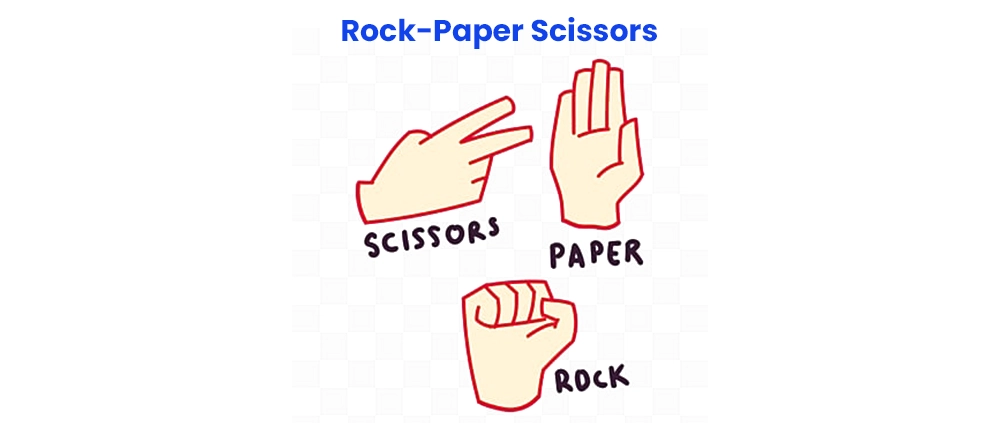
The common commands for a rock-paper-scissors project includes an initial random function, a function for letting the user make a move out of the three (either using a single alphabet or a string), followed by a function for checking the validity of the move, and a final function for finding the winner of a round. Rock-paper-scissors is an easy and interesting project to develop for a beginner in Python programming.
9) Website Blocker
An interesting Python mini project idea is to create a website blocker, which can be created on its own as a beginner. This application helps the user to block certain websites and prevent unwanted pop ups or opening of distracting websites. At a more advanced level, a Python programmer can embed it further in the web browser that they can also create as a project.
Some of the common features of a simple website blocker in Python includes a list of blocked websites, a blocker schedule or filter (e.g. listing when a website is to be blocked, i.e. particular hours of the day etc.) and creation of a simple and easy to follow user interface.
10) Contact Book
This is one of the utility command mini projects that can be created by a simple command function. A contact book Python project helps create an application wherein a user can save the contact details of a person along with other details like the name of the contact holder, the category of contact etc. The user can also view details of all their contacts, update details and so on.
This is one of the easiest Python projects that can be taken up by a beginner to learn the fundamentals of the programming language by a programmer. One of the useful databases for creating this project includes the SQLite database.
11) Mad-Libs Generator
A mad-lib generator is one of the most basic and fundamental projects that a Python learner should try their hands at in the beginning phase. A Mad-Lib generator allows the programmer to play around with strings, variables and concatenation to manipulate and process input data by a user, which can be in the form of textual data like nouns, pronouns, locations etc.
A Mad-Lib generator creates a story template and leaves out certain words for users to guess, such as providing a clue like “noun”, “verb” etc. The user provides the input based on the clue, and the application then replaces these words in the blanks to create a fun and engaging story. A Mad-Lib generator is one of the easy projects in Python that can be taken up by a novice programmer to hone their programming skills further.
12) Text-Based Adventure Game
A text-based adventure game, as the name suggests, is the textual version of an adventure game, wherein a programmer creates various codes and commands that can keep a track of the movements of the user, create walls and provide directions of movements of the user, as well as set restrictions of movement for the user in the adventure.
By creating such a code, what is created is an adventure game in which a user gets to move from one room and lobby in an adventure to another. For each room or space, based on the user input, the user receives a textual description of it, and provides further input to move to other rooms.
13) Dice-Rolling Simulation Game
This basic project can be created on its own by a beginner and at an advanced level can be embedded within another game or utility function. As suggested by the name, a dice rolling simulator helps to draw a number between 1 to 6, which is present on a dice, on a random basis.
This project requires the programmer to develop a code that helps to draw a random number between 1 to 6 for multiple rounds, and ask the user if they want to roll the dice again after an output is presented. It is important to develop an engaging user interface, possibly using a graphical representation, that would allow the user to have a fun experience in using the application.
14) Hangman
Hangman is one of the most engaging games most millennials have played in their childhood. It involves a word-guessing challenge in a limited time period with a limited number of guesses, in which the player must correctly identify a word. The game typically includes a score tracker wherein the score of the player decreases per incorrect letter guess.

To create such a game, the code needs to include variables, string, char, input and output, integer and boolean. One can enter a predecided list of words in the code from which the word to be guessed can be taken. A code for score tracking and one for matching the input of the player with the letter in the word have to be included to create this game. It is one of the most recommended and useful projects in Python for a beginner as it helps to explore various types of data within the same project.
15) e-Mail Slicer
An email slicer is quite a useful and frequently used tool in marketing and other domains, which is primarily used for extracting pertinent details from an email account, such as the domain name, username etc. It is one of the simpler Python projects and requires the coder to create a code including a function to extract the username and the domain name from a given email account.
16) Binary Search Algorithm
A preliminary project to an element search program or application, a binary search algorithm is a program that searches a specific number provided as an input by the user. The basis of a binary search algorithm is that the program creates a list of random numbers, usually with a fixed difference between the succeeding numbers, and when an input for search is provided by the user, the algorithm searches the dataset by dividing it into 2 groups. The search includes looking for the number in either of the data groups until it is located in either of the groups. This is an easy and engaging Python project for a beginner.
17) Desktop Notifier Application
Simple and minimalistic desktop notifiers can be created using Python, in which the application would provide a notification to the user, usually on the basis of a fixed interval of time. The notification provided by the application can be in the form of an email, a text message, a pop-up, an alarm etc.
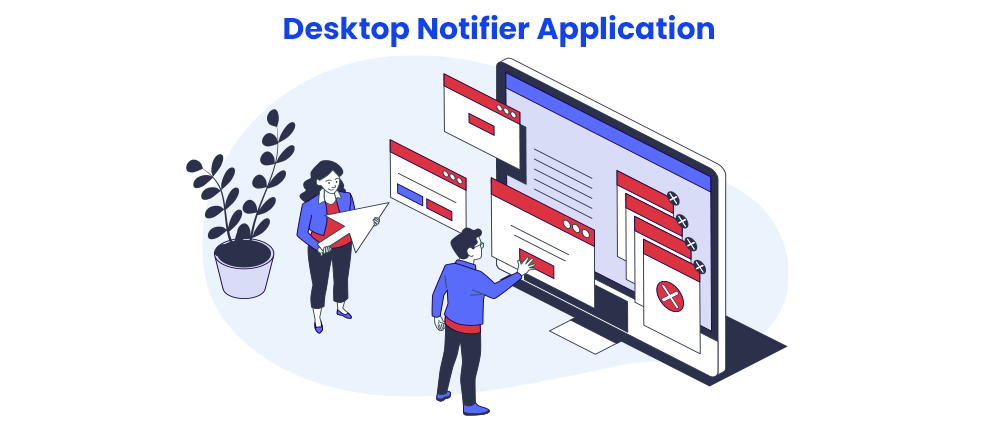
The desktop notifier project can be further developed and tweaked to act as a reminder tool, a self-management and automation tool. Common types of notifiers that can be developed in Python include birthday reminders, weather notifications, stock price indicators, scheduled tasks and meetings reminders etc.
18) Python Story Generator
A Python story generator utilises a random sampling module to build a random and unique story on the basis of the inputs provided by the user. In such a project, a programmer can create a code that enables the user to provide key details as an input such as the name of the characters, the name of the place, background, major timeline or date etc. and the code can read this input to weave it in a template and generate an engaging story around it.
19) YouTube Video Downloader
A YouTube video downloader may seem like a complex project to work upon, but it is one of the easier projects to start with as a beginner. It involves the creation of an application that can link to one’s YouTube and download videos of YT in variable quality and formats/extensions. A YouTube video downloader application enables the user to download any video on the video streaming app YT in a quality of their choice permanently to a device, a feature which is otherwise missing from the application.
Such an application includes a code that enables the application to extract data about the video from YouTube’s servers and store it in the device of the user. However, we caution programmers against creation and illegitimate use of such applications as they may infringe upon copyright and cybersecurity laws of YT.
20) Spin a Yarn
Spin-a-yarn is a fun and engaging game much similar to a story creation application. It is an apt, concise and simple application In this application, the user provides random input about some characters, a few pronouns, nouns and other similar string variables (textual). The application then weaves these inputs in a preexisting story template, often leading to the creation of a humorous and engaging story.
Simpler versions of the project can include a single player mode wherein a single player provides inputs which is fit in preexisting story templates available in the coded database. On the other hand, a more complex or further tweaked version of this game may include multiple players who take turns in providing inputs, which is then woven together to create a collaborative story. It is up to you as a programmer to play around with the innumerous possibilities that you can explore with your very own project!
21) Leap-It!
A leap-it! is an interesting and easy-to-use application which tells a user if a year fed as an input in the app is a leap year or not. This application includes a simple numerical input feature and an output feature showing if the year is a leap year or not, all integrated in a simple user interface.
This Python project, although simple in its outputs, requires the programmer to have a concrete understanding of the Python Operators and Python “If-Else” statements. Learners are recommended to gain academic knowledge about them before trying them hands-on in coding. This can be quite an engaging project for those trying to grow their skills in Python programming.
22) Fibonacci Sequence Game
A Fibonacci sequence game is similar to a leap-it! game wherein the input provided by the user in the form of a number is checked against the Fibonacci sequence to confirm if it belongs to the sequence or not. This type of game also utilises Python operators and if-else statements. This can be a fun project to try one’s hands on as a beginner.
23) Calculator
Calculators can certainly vary in their levels of complexity, as can be seen as the case with scientific calculators. However, as a beginner, you can definitely try your hand at creating a simple basic calculator that performs mathematical operations such as addition, subtraction, multiplication, division etc.
Creating a calculator in Python requires coding pertaining to numericals and mathematical operations, and must include basic features such as receiving inputs from the user, performing the operation described in the input, handling errors without malfunctioning or glitching (e.g. division of a number of 0 in the input), producing the accurate output, and providing a user loop, through which the user can perform multiple continuous operations without having to restart the application all over again.
Intermediate-Level Python Project Ideas

1) Simple Automation Apps
You can also build simple apps to automate your day-to-day small jobs or create automation apps for your personal habits. These jobs or personal habits should be something that is repetitive in a way so that it is easy for you to code. Such codes offer good practice in Python as well as help you manage your habits and time.
Key features of creating such an automation application includes creating the automation logic, coding for actual automation of the task/function/habit you wish to manage, logging or tracking (if needed) and so on. Creating a project of this kind on Python can include considerable grip of the programmer over task defining, file operations, requests etc.
2) Code-Decode Generator
As discussed earlier, a code generator or encoding application used in steganography can be created at the beginner level to encode an input text. You can level up the project by writing code for decoding messages that are encoded. You can add your own upgraded features like generating passwords or different types of codes. Such projects are commonly used in encryption departments, cybersecurity, data security etc. and hence can be a very useful addition to one’s portfolio for career growth in development and programming.
Such a project commonly includes features like an encoding algorithm (common examples include Caesar cipher, substitution cipher, base64 etc.), a decoding algorithm that enables decrypting the message based on the chosen encrypting code, error handling etc.
3) Clock Website
You can upgrade the countdown calculator discussed at the beginner level by building a clock website with different time zones and then calculating the time lengths for each time zone. You can level up by getting as close to real-time as possible.
Since this a web-based application, it would require the programmer to code for the web framework they wish to use, create a GUI to make the website appealing, as well as a real-time deployer to get as close to real-time as possible. Although challenging, this project is a must-try for all developers and learning programmers to excel in Python programming.
4) Tic-Tac-Toe and Other Popular Games
You can build popular games like Tic-Tac-Toe the same as played in the real world with a UI for users to click on open squares. You can level up and make the game even more interesting by creating an AI against which the users can play in real-time. All you need is to create a UI consisting of a 3x3 grid wherein users can click on a box to mark an ‘O’ or an ‘X’, and a function that can read and identify horizontal, vertical or diagonal lines of the same symbol, i.e. all ‘O’s or all ‘X’s. You can also recreate board games like Checkers, Risk, Settlers of Catan, etc.
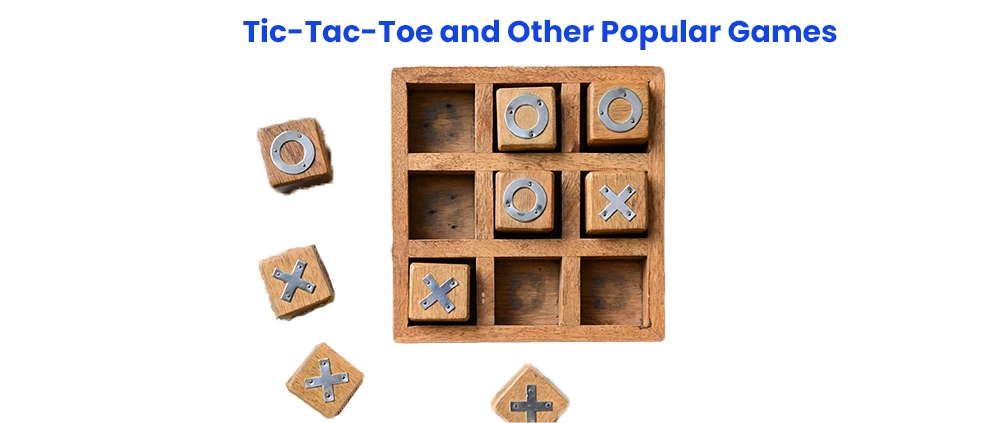
Creating common games like memory game, snake, ping-pong, text-adventure (which has been explained previously) etc. requires the programmer to create a code that helps gather input, process it based on a provided algorithm and create an interactive output. Engaging GUIs are an important component of such games along with score trackers, validity checkers of user responses and countdown timers (for timed games).
5) Web Browser
You can create your own web browser with an easy UI. You can keep it simple at first by accepting URLs and loading webpages, and then slowly keep adding features like bookmarks, a back button, or any other cool feature that you can’t find in other browsers.
With development of further skills and competencies, a Python programmer can develop a nuanced web browser with multiple unique features and uses. Common aspects of creation of a webpage include those like a web rendering engine, a GUI framework, an easy to follow user interface, navigation, bookmarks and history, settings and configuration, security etc.
6) Typing Speed Tester
Another innovative and unique Python project, you can create a typing speed calculator using which you can calculate the speed at which a user types. You can add more features to this app, like you can score them for their accuracy, find the number of typed words per minute and you can even create different levels of difficulty, and add other features to make it engaging and interesting.
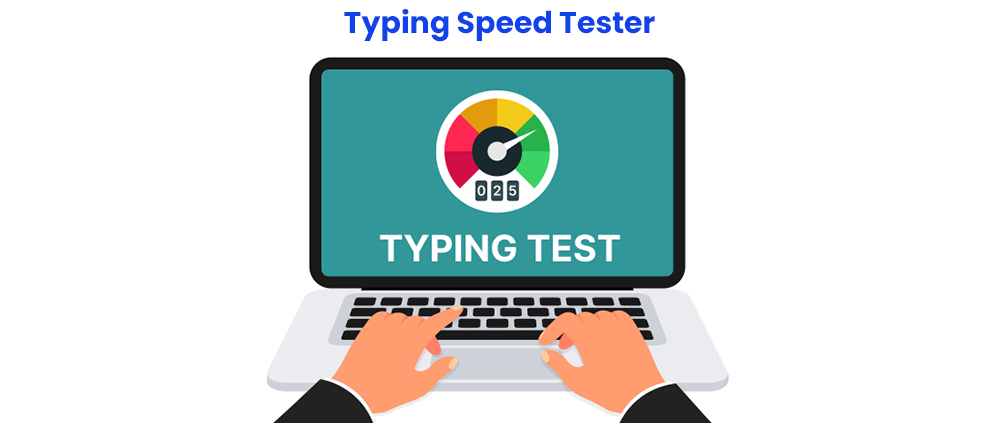
The common components that the programmer must code for in this project would include the textual database consisting of textual segments that the users can look up and type, a timer to assess the time taken to type out a segment, an accuracy tracker and a calculator for calculating the time taken for typing a text out and its accuracy. To make the application more engaging and interesting, you can also add an interactive and easy to follow user interface and an integrated score provider based on the time taken for typing and the accuracy of typing.
7) Voice Assistant
Just like Alexa, OK Google, and Siri, you can create your own voice assistant. Python is one of the best languages for scriptwriters and you can easily use it to create a voice assistant and customise it based on the particular user needs to start with.
Creating such a project requires the programmer to have a good hold over the use of Python libraries and APIs. A voice assistant project in Python can also be created by use of Natural Language Processing or NLP. Common components that must be coded for such a project include a speech recognition system, an NLP processor, a Text-to-Speech (TTS) processor, a voice activation system, a system for generating accurate responses to actions and inputs and more. This is a challenging but engaging Python project.
9) Chatbot
Chatbots are becoming increasingly popular! You can create one yourself for a particular site like Reddit. This famous social media app deals with questions and answers. This app now allows bots to be linked to automate comments. With the advent of AI chatbots, creating one’s own Python project and chatbot can be a really engaging project idea. Although a little challenging, this project can help develop skills in programming that can set one apart from the rest of the crowd.
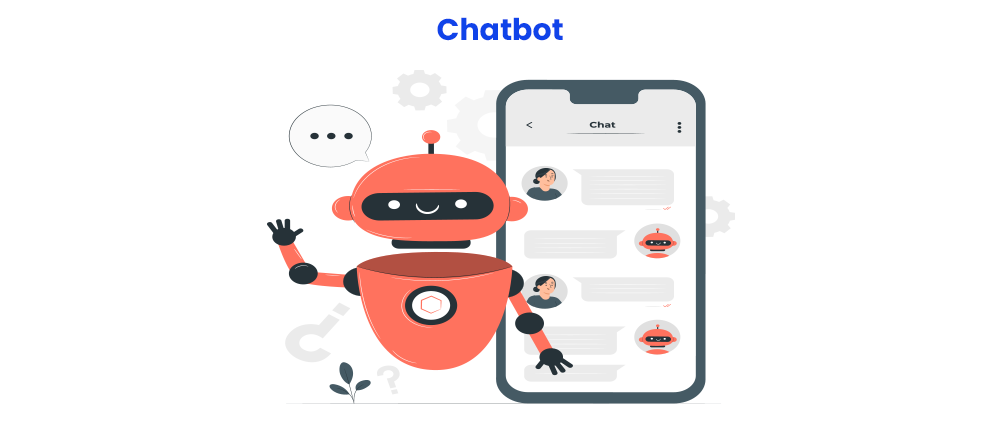
A programmer must pay attention to components like the user interface of the chatbot application, the model for NLP chosen, the response generation pattern, error handling by the bot and accuracy and appropriateness of responses given by the bot.
10) Password Generator
You can create an app that creates a unique and strong password each time you use it. You can add features to this app with different customisations and filters like variable lengths, use of some particular characters/special characters, lower/upper case requirements, etc. Another type of password generator that can be used to generate a random password by using certain words given as input to the application.
One can play around with how specific and advanced they want to make their password generator application with respect to its password generation logic, the randomness of created passwords, the storage capacities of the passwords, the security of the passwords, the filters and customisations available for creating the password and so on. As one learns and hones the specific skills of Python programming, creating nuanced projects becomes an easy and engaging task.
11) Wikipedia Page Fetcher Application
An innovative and creative project to work on, a Wikipedia page fetcher is an application that draws a random Wikipedia page and asks the user if it is relevant for them or if they wish to read the page. Based on the Yes/No command received as input, the application either displays the page to the user or fetches another page, and the process continues.
This project includes components and functions that allow the application to receive inputs from the user, such as a search or certain keywords about the page they wish to search for, a code to read the Wikipedia API, a code for a popup confirming if the user wishes to see the application, an output displayer that would display the text, images, links and other details of the Wikipedia page and an error handling code to deal with glitches and inaccuracies in functioning that may arise. Creating a Wikipedia page fetcher is quite a unique project idea that can make up for an appealing portfolio in Python programming.
12) Reddit Bot
A Reddit bot is an interesting project to take on and can be a much useful tool for Reddit users as it would allow seamless automation of a variety of tasks on Reddit including those like posting comments, tracking subreddits, automation of upvotes and downvotes and much more, allowing a user to spend more time online using the application in a useful and effortless manner. A Reddit bot can also allow the user to easily crawl the social media platform and display potentially useful information to the user.
Some of the common aspects of creating a Reddit bot include having a Reddit account, getting access to the Reddit API, creation of bot logic, its authentication on the app and error handling by the bot. A bot can be created to perform a specific function such as automating the upvotes and downvotes only, or be integrated to perform a myriad of different functions.
13) Python Command-Line Application
Excellent for creation of command-line interfaces and applications, Python can be used as a programming language to create a number of command-line applications. One such example can be an automated email-sender application, wherein the user needs to provide the app with information regarding their email credentials and the content of the specific email they need to send. The application would then create an email using a command-line function and approve it before sending the mail.
14) Post-It Notes
A post-it notes, much similar to other note applications, would include a graphically appealing virtual version of the physical stick-on notes in which one can note down tasks, reminders, important events or simply trivial chores they need reminders about. While physical post-its are becoming obsolete in recent times, virtual post-it applications are garnering much popularity since they can be accessed through any device on a single digital platform (e.g. an application, an in-built extension integrated with an email ID and so on).
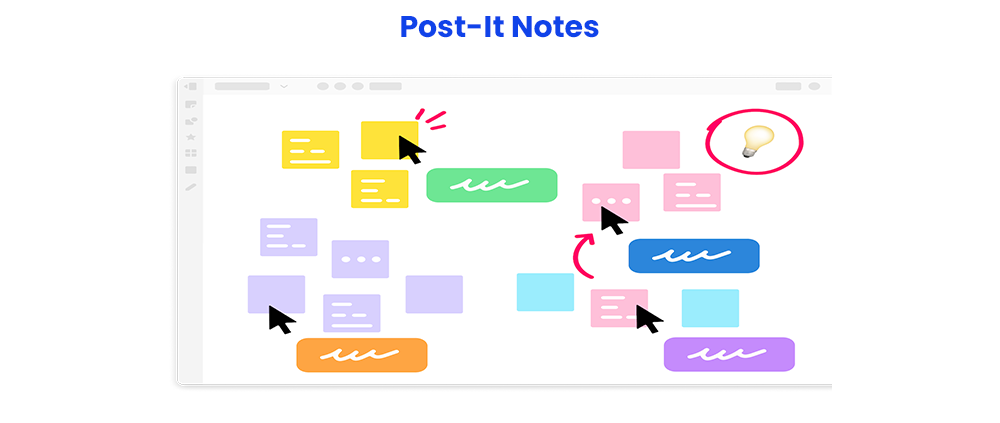
A post-it notes application would include features like virtual colourful notes which can be made visible on the screen of a device (similar to a physical stick-on note), an authentication feature (which can enable a user to login through more than one device), a feature that enables the user to create an account (Django can be used for this), al integrated in the form of an appealing and easy-to-use user interface. Creating such an application can add significant value to one’s portfolio since it is a useful application and innovative in its own right.
15) Site Connectivity Checker
Working on a site connectivity checker is an innovative project and quite a novel and challenging venture since it requires the programmer to work from scratch to create the application. A site connectivity checker is an application that checks whether a given web address or URL is currently live/active or not. The application can be used by a user by providing a particular URL to be checked or on a regular basis in which a given set of URLs is automatically checked on a regular basis by the app and their status is updated.
Creation of such an application includes features like the framework used to collect the set of URLs a user wants to check, this can include common frameworks such as click, argparse, docopt etc. A Transmission Control Protocol (TCP) or an Internet Control Message Protocol (ICMP) can be used for the connections that the application needs to maintain.
16) Directory Tree Generator
A directory tree generator is an application or tool that helps to visualise the various libraries/directories and the files contained inside them, to show the relationship and location of these files. Such an application can also include features that help the user search the name of specific files that they require, which can then quickly be crawled among the directories by the app and displayed for easy access to the user.
This project would entail the creation of and coding for components like the modules for file system navigation, visual “tree” representation of the directory tree generator, a display for the tree and a recursion (which would allow to crawl the nester directories and show their paths and relationships with other directories). This project can be a little complex, but is worth giving a shot considering the variety of domains it enables the learner to gain expertise in.
Advanced Level Python Project Ideas

1) Robot Programming
This might require considerable investment of time and resources due to the hardware involved. However, there are a lot of affordable options if you wish to go for it. Engaging in robot programming can be an enriching experience and a really fun and exciting project as well, especially for robotics enthusiasts. Machine learning courses can also help a student or learner to gain skills in Python robot programming.
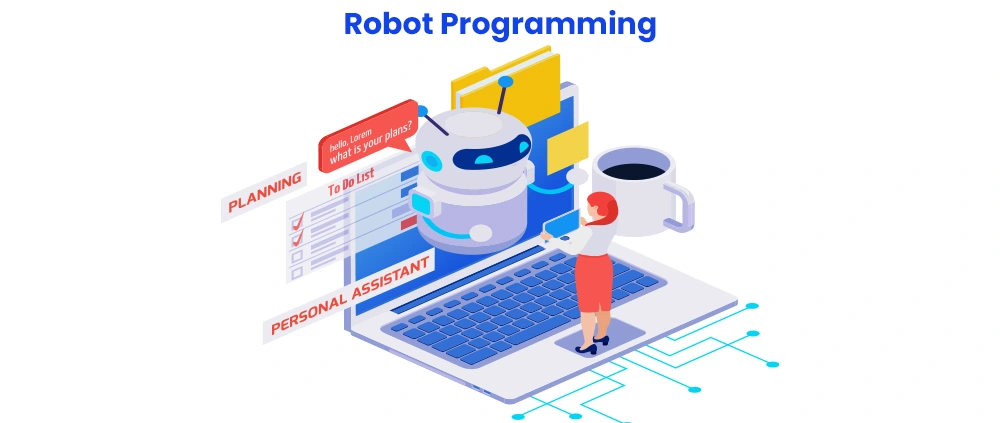
Some of the common aspects of the programming to focus upon in this project includes simulation of the robot, robot controls, the sensors of the robot, the movement controls of the robot, documentation and appropriate tutorials for the use of the robot, debugging of the robot, customizability, safety measures in the robot and so on.
2) Prediction App for Stock Market
Although not a completely unique project, with many similar apps available, it is one of the best projects to hone your Python programming skills. This project will need you to find a source for stock market data and some machine learning skills.
The major features this project application must possess in order to be effective includes historical stock market data from various inventories and APIs, evaluation metrics, real-time data display, an error handling moel, a machine learning model, a backtesting functionality and so on.
3) Image Recognition App
It is quite a popular project among Python programmers. If you are not comfortable directly with image recognition, then you can start with handwriting recognition and then level up the game! Image recognition applications can serve a variety of functions such as identifying textual content on an image to convert it into a digital text, identify visual information to provide it a different label and so on.
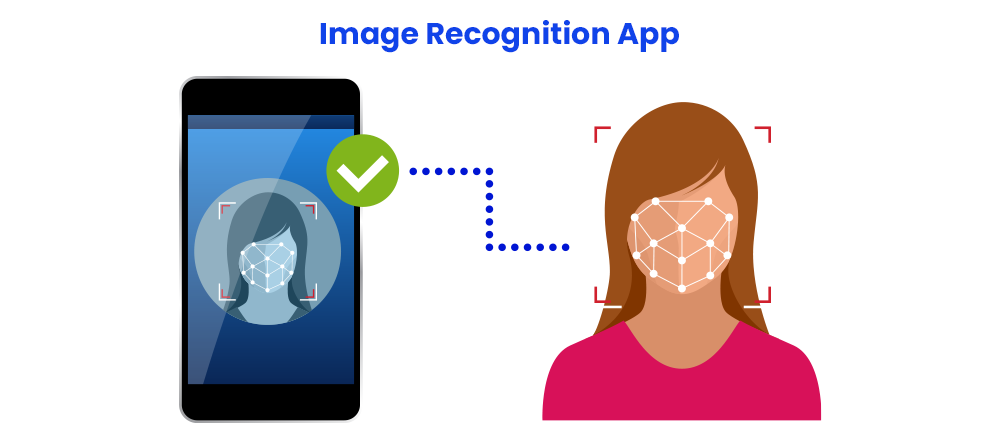
More sophisticated versions of the application include those that can recognise images, faces (facial recognition), detect objects etc. Optical character recognition or OCR is another major example of an extended version of an image recognition application. Such applications require an image input, a machine learning model, a model loading, tools for prediction and display of results etc.
4) Sentiment Analysis Model
A sentiment analysis model is a thorough and nuanced project created to identify the emotional undertones behind images, texts, social media posts etc. Such models are created to identify and classify inputs (visual, audio, textual) into emotional categories like positive and negative, happy or sad etc. Many such models already exist but you can make a unique model with different features and customisations. Even if you can’t come up with a different or unique modular idea for a sentiment analysis model, then this model is a really great one to practise your skills and upscale yourselves.
The common applications of such a sentiment analysis model include automated customer feedback analysis, social media tracking, opinion mining, media monitoring and so on.
5) Price Prediction Model
A price prediction model uses a variety of strings and functions to create a predictive tool and database for a product’s prices. You can choose a particular product, brand or industry and build a model to predict the changes in their price. Such a model can predict prices of a variety of products and services like household products, properties and real estate, vehicles and cars etc. Stock price predictive models are an extension of this type of model.
The common components which require attention in creating such an application include the historical data about the commodity or service whose price is to be predicted, features for predicting prices (e.g. demand rates, features/technical indicators etc.) a statistical model or machine learning for making the price prediction, visualisation of results, user interface etc.
6) Content Aggregator
An interesting project idea at a more advanced level can be to create a content aggregator, i.e. an app or a website that can collect and gather relevant content from several sites all in one place. Along with Python, you will use the popular Django framework for this project. The project can be further tweaked to incorporate a comparison feature that can compare the gathered information from various sources.
Some of the common domains in which such a content aggregator can be used include social media monitoring and content aggregation, rates and review aggregation, aggregation of job listings related to a particular position/domain, news aggregation, accumulation of educational resources etc.
7) Plagiarism Checking Tool
There are lots of such tools already available, however, many writers and content creators still find a way to get away with using original content by others without due citation.
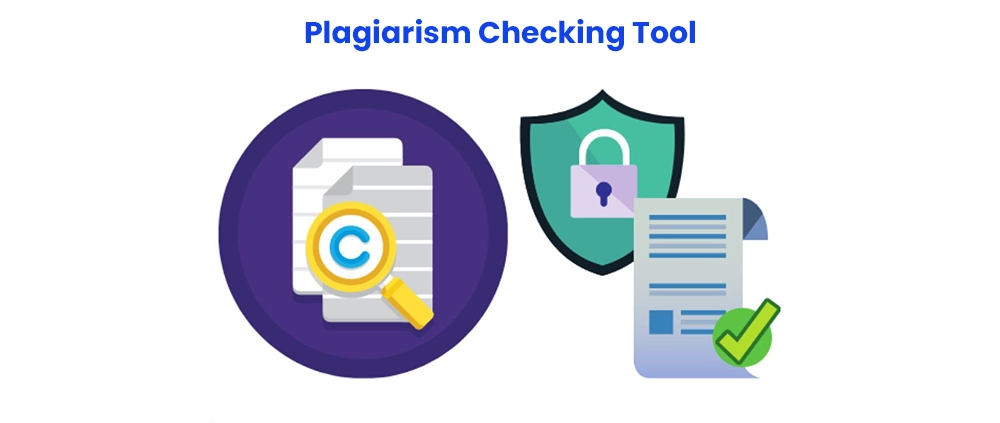
In this context, as a Python programmer, you can create a tool with advanced and specific settings and features to spot plagiarism. One common way to do this is to use a natural language processing library along with the Google API to search for plagiarism. It could be quite a challenging task to create such a project, but it's all a part of the formative experience of advanced programming.
8) Music Player
Just like Spotify, JioMusic, and YTMusic, you can create your own music player with features that you think are useful but missing in the music players that are currently ruling the market. Such a project can include various common features like choosing tracks, searching tracks of music, lowering/increasing volume etc. in addition to more unique features. Creating a project like this involves the use of a mix of skills related to database management, Python programming, data processing and algorithm construction.
9) Image Resizing Application
Creation of an image resizing application would require advanced programming which would include commands for the application to pre-process data and further name or resize the input image. Such a project requires a deft skill in both Python programming and machine learning. It requires the use of a Python Image Library, one of the most common among which is Pillow or PIL.
The common features available for use in such an application includes those like an image input feature, provisions for providing customised resizing requirements (e.g. width, height, breadth, size of file etc.), actual resizing functions, image saving feature, a backup etc.
10) Photo Downloader
A photo downloader application can be quite useful for users who want to download images from social media platforms like Instagram, Facebook etc. Such an application uses a line command and enables the user to access the social media platform through login using own credentials and look up and download images.

Such an application must provide due attention to aspects such as the input method (whether to go for a URL or a login to a social media app or a search query to browse the internet for retrieving image), the web scraping, the image downloading, features for saving the image in a specific folder/location, file format, managing errors, batch downloading etc.
11) Python File Explorer
A Python file explorer is much similar to Python Directory Tree Generator in that it deals with the files and directories on the device of a user, but it is a more exhaustive project considering it requires the creation of an entire application that can not only show the relationships between files in a tree-like flowchart, but can help the user manage and navigate files on their device, search files quickly, copy or move them from one directory/folder to another and much more. A file explorer application is a full-fledged application that a user can install in their device and use as the file manager for their files and data.
Some of the main features that the programmer can incorporate in their application includes file navigation system, file operations like viewing the files, altering them, adding new files etc., file search options, keyboard shortcuts for various operations, file filtering etc. One of the useful modules for creation of such a project includes Tkinkter.
12) Web Crawler
Web crawling applications are one of the most-used and demanded tools in recent times. A web crawler searches the internet or the World Wide Web systematically to find URLs and web pages relevant to a topic, store the information of these pages and systematically integrate the information from various sources to combine it in a meaningful and coherent manner. Certain web crawlers may also be used for purposes like data mining, web indexing, content scraping etc.
A web crawler application requires functions and codes for components like seed URLs (the initial URL from where crawling begins), crawling logic (identifying the URL and hyperlinks in the HTML coding of a webpage), a URL queue (to identify the set and sequence of URLs to be crawled), set of visited URLs, storage of information, error handling etc.
13) Expense Tracker
An expense tracker is another personal management tool which can be used by a user to keep a record of their expenses, their expenditures, financial savings etc. on a regular basis. A more updated or sophisticated version of this application can include features that allow business or organisations to manage finances. In other versions of the application, the programmer can embed the expense tracker tool as a part of a larger self-management application combined with other automated functions like personal habit management, time trackers and time management applications, post-it notes etc.
![]()
The common features that the programmer can incorporate in an expense tracker application include those like an easy and appealing user-interface (many users these days prefer aesthetic expense trackers), expense entry, expense list, category of expenditure, summary and graphical representation of the expenditure (this requires a statistical software/tool that can analyse and effectively summarise the expenditures by the person over a day/week/month), expense filtering, deletion and sorting etc.
14) Regex Query Tool
A regex query tool is a specifically designed application or tool that helps a user to check a certain query/search against an existing regex or set of strings. A regex query tool works by comparing and searching for any matches between a user’s search with a regex and reporting/displaying the similarities when matches of the search with the regex are found while crawling. It is a search tool quite useful in text search, matching and manipulation tasks. Common components/features of the regex query tool include searching and regex evaluation tools, match highlighting, error handling, feedback to users etc.
|
|
|
|
|
|
|
|
|
|
|
|
|
|
|
|
|
|
100 Python Project Ideas List
If you are still unsure of an idea for your first Python Project, then here is a list of 100 Python project ideas for you to pick from. The following list includes all levels of project ideas- for beginners, intermediate, and advanced levels. All these ideas are for projects combining Python and Machine Learning and hence are latest, trendy, and industry-oriented. All these following ideas have been listed keeping in mind the current trends so that you can include these projects in your professional portfolio.
| 100 Python Project Ideas | |||
|
Age Detection |
Sentiment Analysis for Alexa |
Sentiment Analysis for products of a particular site (eg- Amazon) |
Recommendation System for a particular site (eg- Netflix) |
|
Keyboard Autocorrect |
Automatic Recognition System for Vehicle Licence Plates |
Automatic Time Series Forecasting |
Robot Barbie |
|
Collaborative Filtering Recommender System |
Finder for Similar Images |
Classification Algorithms for Digital Transformation used in Banking |
CNN for Image Colorization |
|
Image Cartooning |
Catching Illegal Fishing |
Census Income Dataset |
Spam Filter (or other classification projects) |
|
Classification using Neural Networks |
Object Detection in Images |
Prediction for Coupon Purchase |
Covid-19 Detection using relevant datasets |
|
Prediction Model for Currency Exchange Rate |
Prediction Analysis for Customer Churn |
Text Detection in Images |
Deepfake Videos Detection |
|
Cat and Dog Classification |
Price Prediction for Dogecoin |
Prediction for Driver Demand for various delivery apps |
Emoji/Avatar creator |
|
Fake news detection model (end-to-end) |
Spam detection model (end-to-end) |
Enron Investigation Project |
Text Classification using Transformers (RoBERTa and XLNet Models) |
|
Detection for Fake Currency |
Fake News Detection |
Web Crawler |
Cyber Fraud Detection |
|
Gender Classification |
Gender Detection |
Prediction for Gold Price |
Sentiment Analysis for Google Play Store |
|
Handwriting Recognition |
Detection for Hate Speech |
Heart Disease Prediction |
Sentiment Analysis for Hotel Reviews |
|
House/Property Price Prediction |
Human Activity Recognition (HAR) |
Inventory Management System |
Language Classification |
|
Prediction for Loan Eligibility |
Market Basket Analysis Model |
MLOps Project |
Classification of the MNIST Handwritten Digit |
|
Classification of Mobile Prices |
Movie Recommendation System |
Music Recommendation System |
Stock Price Prediction Netflix |
|
Network Security Analysis |
Prediction Model for Next Word |
Chatbot based on NLP |
Object Detection |
|
Demand Forecast for Uber Cab Request |
OpenAI (by Elon Musk) Gym |
OpenCV Project (Basic Concepts of Computer Vision) |
OpenCV Project (Advanced Concepts of Computer Vision) |
|
Image to Pencil Sketch Project |
Plant Species Detection |
Pneumonia Detection |
Credit Risk/ Credit Default Prediction |
|
Tinder/Bumble Match Prediction |
Sentiment Analysis for Elections |
Interest Levels of Rentals Prediction |
Instagram Photo Downloader |
|
Weather Prediction Model |
Text to Image Generator (like DALL-E) |
Face Mask Detection in Real Time |
Gender Detection in Real Time |
|
Sentiment Analysis in Real Time |
Resume Parser Creation using NLP SpaCy (Python’s Library) |
Sales Forecasting for any industry |
Sarcasm Detection |
|
Classification of Skin Cancer |
Classification of Social Media Ads |
Prediction of Social Media Followers |
Sentiment Analysis for Social Media |
|
Emotion Recognition in Speech |
Predictor for Stock Prices |
Ted Talks Recommendation Model |
Topic Modelling |
|
Ultrasound Nerve Segmentation |
Solar System Visualisation |
Analysis of WhatsApp Group chats |
Video Downloader |
|
Scientific Calculator |
Spam Filter for Email |
Website Blocker |
Random Password Generator |
|
Speed Typing Test |
Voice Recognition in Real Time |
Vehicle Detection from a video (Traffic) |
Social Distancing Detection Project (A part of Object Detection) |
Hoping that the blog was helpful in broadening your vision and helping you choose a project idea to kickstart your Python programming journey, we wish you the very best for future endeavours.
Top Trending Articles
|
|
|
|
|
|
|
|
|
|
|
|
|
|
|
Conclusion
If you are a complete novice to this programming language, then you must first build your basics before you can begin creating projects. For this, you can pursue an online course in Python Programming or pursue a short-term course in the language.
There are many online learning platforms like Coursera and Udemy where you will be able to find affordable online courses that teach you Python programming as per your level of expertise. Thus, you can start exploring the language as a novice or build on your skills as an already experienced programmer. The projects mentioned in this blog were for users with varying levels of expertise and knowledge in Python, from beginners to intermediate and to advanced levels.
The 52+ exciting Python projects list in this blog includes project ideas that require Machine Learning. This is because Python alone may turn obsolete for advanced career escalation. To adapt to the demands and needs of the industry, a programmer must keep upskilling oneself and learn skills like AI and machine learning. Therefore, if you are not well-versed with Machine Learning, you can pursue a short-term online certificate course or Diploma in AI & Machine Learning to get your programming game strong.
FAQs (Frequently Asked Questions)
Some of the easiest Python projects are-
- Number guessing
- Tic-Tac-Toe
- Calculator
- Mad Libs Generator
- Alarm Clock
- Dice Roll Generator
- Currency Converter
- Encoding Generator
- Rock Paper Scissors
- Binary Search Algorithm
Some of the projects for Python are-
- Voice Assistant
- Music Player
- Web browser
- Reddit Bot
- Clock Website (with Countdown Calculator)
- Games with AI
- Password Generator
- Simple Automation Apps
- Number Guessing
- Scientific Calculator
Some of the big projects that use Python include
- Weather Forecasting
- Rocket Trajectory Prediction
- In Medical Science for Disease Detection
- NLP-based Chatbots
- Robotics Programming
- Real-Time Object Detection
- Real-Time Sentiment Analysis
- Real-Time Age & Gender Detection
Python is a popular and quite useful programming language and hence can help you make money with your programming skills. You can get a job as a Developer, you can work on a freelance basis as well or create your own Start-Up, based on the level of expertise you possess in the programming language and related domains like machine learning, artificial intelligence etc. There are many other ways you can make money using Python skills, such as through offering online tutorials, starting YouTube channels or Blogging etc.
It takes around 2-6 months to completely understand and learn the concepts and fundamentals of Python. However, you can learn enough in a single day to write a basic program.
Yes, you can definitely get a job as a Developer after learning Python. Some other job domains where having knowledge in Python is useful include quality assurance engineering, data science, software engineering etc. All the mentioned job domains are quite fairly compensated, however, they require the person to have proficiency in not only Python as a programming language but a number of other related skills like database management, machine learning, artificial intelligence etc.
Based on the number of hours you put in, then yes you might be able to learn a lot of Python programming in 2 to 3 days. However, 3 days are not enough to learn the language if you do not have a background in programming at all as you will not be able to learn each and every concept and fundamentals. A longer period, at least of one month to two months, is needed to gain a holistic understanding and ace skills of Python programming for a complete novice.

Idea Alchemist / Concept Creator / Insight Generator
We are an online education platform where users can compare 100+ online universities on 30+ X-factors in just 2 minutes. With an active CV community, we have transformed online learning to quite an extent. With the CV Subsidy scheme, we contributing to GER in India while helping our learners with their finances in their “Chuno Apna Sahi” journey!
Every query is essential.
Our team of experts, or experienced individuals, will answer it within 24 hours.
Recommended for you
Tired of dealing with call centers!
Get a professional advisor for Career!
LIFETIME FREE
Rs.1499(Exclusive offer for today)

Pooja
MBA 7 yrs exp

Sarthak
M.Com 4 yrs exp

Kapil Gupta
MCA 5 yrs exp
or



Career Finder
(Career Suitability Test)
Explore and Find out your Most Suitable Career Path. Get Started with our Career Finder Tool Now!
ROI Calculator
Find out the expected salary, costs, and ROI of your chosen online university with our free calculator.

